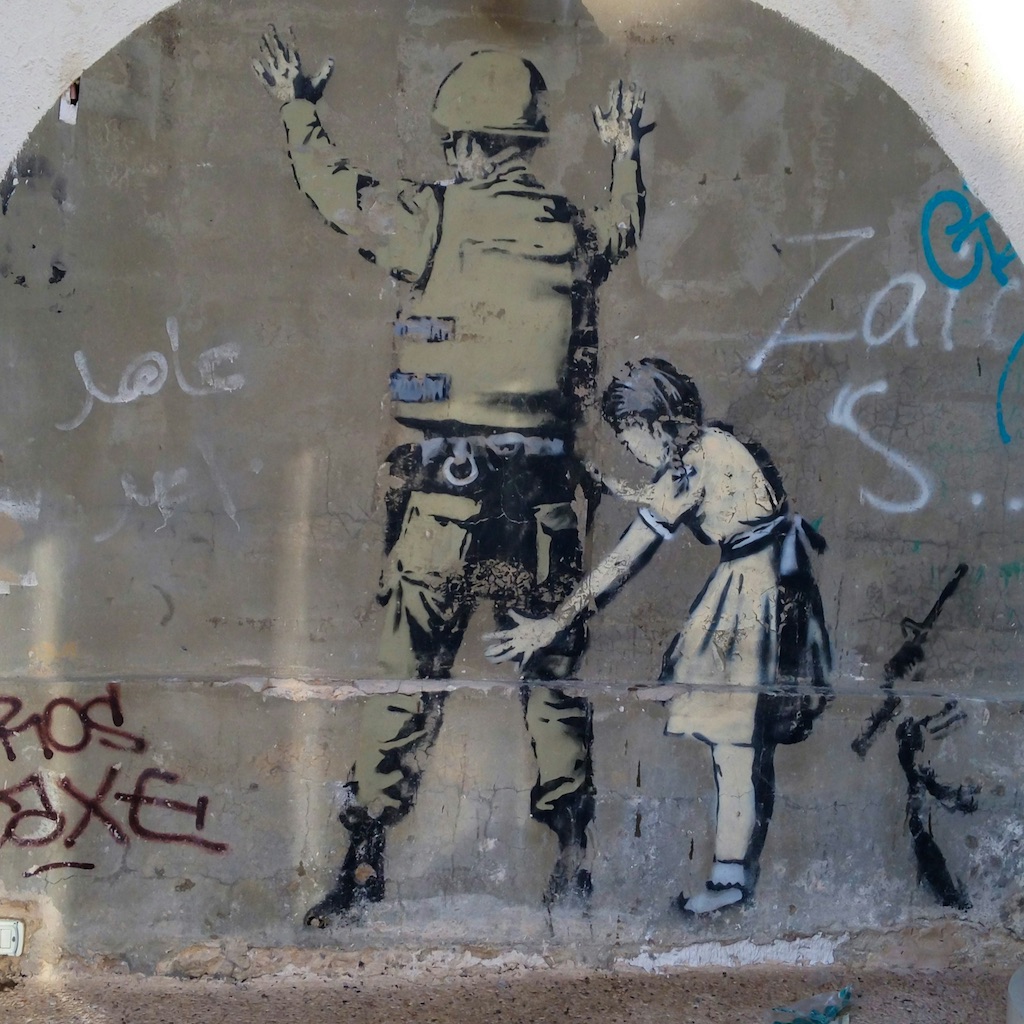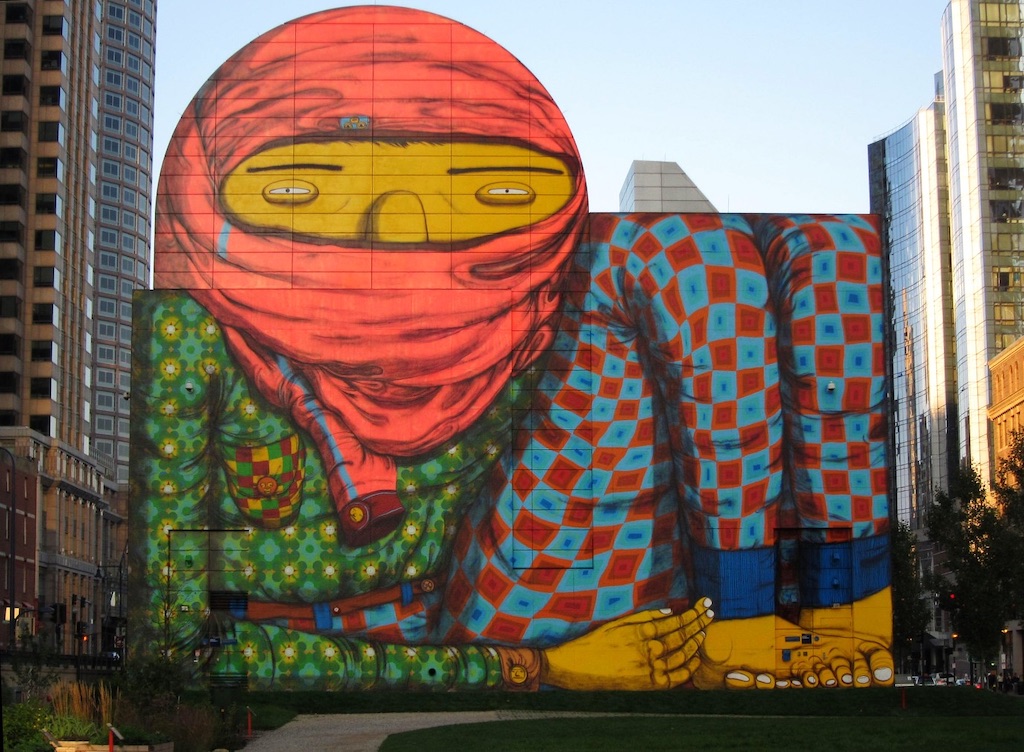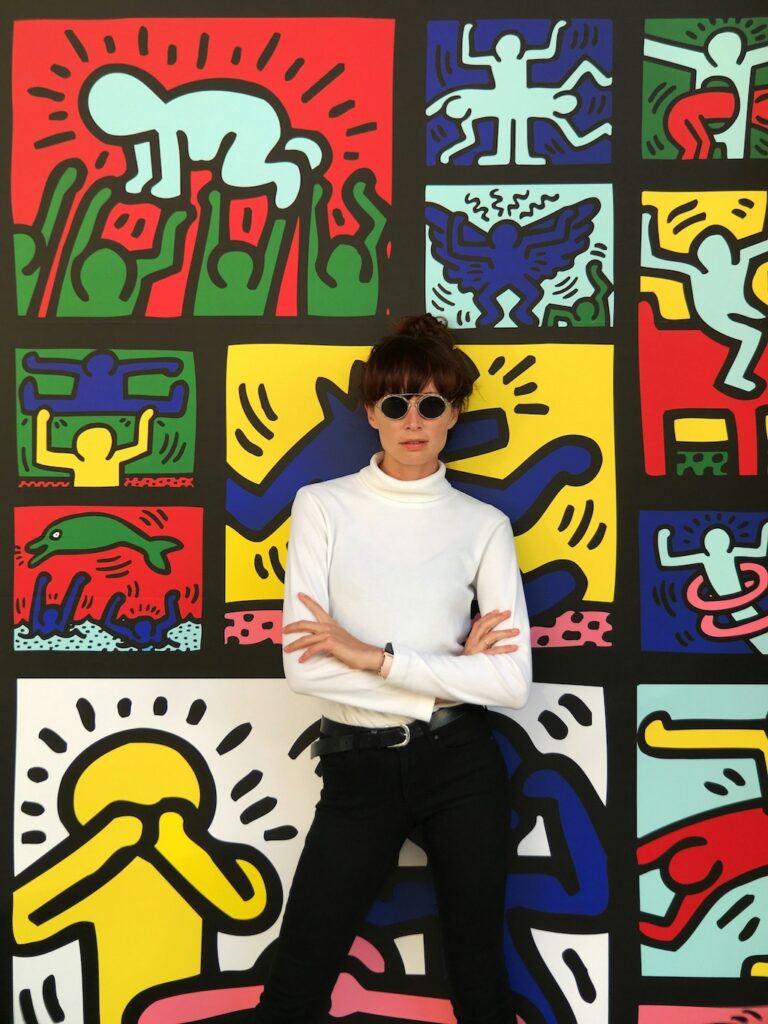Imagine strolling through a city and stumbling upon a mural that stops you in your tracks—a riot of colour, wit, and social commentary splashed across a once-blank wall. This is the magic of street art, a movement that has transformed urban landscapes and challenged the very definition of art. The story of street art evolution is one of rebellion, innovation, and, ultimately, acceptance. Once dismissed as mere vandalism, street art has journeyed from the shadows of city subways to the hallowed halls of galleries and museums, reshaping both public spaces and the art world itself.
But what exactly is street art? Unlike traditional art forms confined to studios and galleries, street art is created in public spaces—on walls, trains, pavements, and even rooftops. It’s a form of visual dialogue between artists and the city, blending creativity with activism, humour, and sometimes outright defiance. As we trace the history of street art, we’ll discover how it evolved from simple graffiti tags to a multifaceted global phenomenon, forever altering the fabric of urban life.

The roots of graffiti: rebellion and expression
History of street art: ancient markings to modern messages
Long before “street art” became a buzzword, humans were leaving their marks on public spaces. From prehistoric cave paintings to Roman graffiti, the urge to inscribe one’s presence is ancient. However, the modern history of street art begins in the gritty urban environments of the late 20th century, particularly in Philadelphia and New York City.
Graffiti’s modern emergence
In the late 1960s and early 1970s, graffiti exploded onto the scene as a form of urban expression. Philadelphia’s Cornbread is often credited as one of the first modern graffiti writers, while New York’s Taki 183 became infamous for tagging his name across the city’s subway system. These early artists, known as “writers,” were motivated by a desire to be seen and heard in a society that often ignored them. Graffiti became a voice for the disenfranchised, a mark of territory, and a symbol of anti-establishment sentiment.
Motivations: more than just vandalism
Early graffiti was more than mindless scribbling. It was a coded language of rebellion and identity, a way for marginalised communities to claim space and challenge authority. The rise of hip-hop culture in the 1970s further fuelled graffiti’s growth, intertwining it with music, dance, and fashion as pillars of urban identity.
Key figures and crews
- Cornbread (Philadelphia): Widely considered the first modern graffiti artist.
- Taki 183 (New York): His ubiquitous tags made him a legend and inspired countless imitators.
- Phase 2, Futura 2000, Dondi White, Lady Pink: Innovators who pushed graffiti’s boundaries, introducing new styles and techniques.
Techniques and styles
Graffiti evolved rapidly, moving from simple “tags” (stylised signatures) to “throw-ups” (bubble letters) and elaborate “pieces” (masterpieces). Each style reflected the artist’s personality and skill, with the subway trains of New York becoming moving canvases for this burgeoning art form.
The transition and diversification of street art
Beyond letters: expanding the street art definition
By the late 1970s and early 1980s, some artists began to push beyond graffiti’s lettering tradition. They incorporated imagery, stencils, stickers, paste-ups, and even sculptures into their work. This marked a crucial turning point in the street art movement, as artists sought to engage the public with more complex messages and visual narratives.
New motivations and artistic expression
The evolution of graffiti into street art was driven by a desire for broader artistic expression and social commentary. Artists started using public spaces to address political issues, challenge social norms, and provoke thought. The city became an open-air gallery, accessible to everyone, not just the elite few.
Key movements and subgenres
- Stencil Art: Pioneered by artists like Blek le Rat (Paris) and later popularised by Banksy (UK), stencils allowed for quick, repeatable, and often satirical imagery.
- Paste-Ups and Stickers: Artists used paper cut-outs and adhesive stickers to spread their messages rapidly.
- Murals and Urban Interventions: Large-scale murals and interactive installations transformed entire neighbourhoods, blurring the line between art and activism.

Key artists and their impact
Pioneers: bridging graffiti and street art
- Jean-Michel Basquiat: Starting as SAMO on the streets of New York, Basquiat’s poetic graffiti evolved into paintings that bridged street culture and high art. He became a symbol of the street art movement’s potential for artistic depth and commercial success.
- Keith Haring: Known for his vibrant, cartoon-like figures, Haring brought street art into the mainstream with his subway drawings and public murals. His work tackled issues like drug addiction, AIDS, and social justice, making art accessible and relevant to everyday people.
Modern masters: icons of contemporary street art
| Artist | Signature style & impact |
|---|---|
| Banksy | Satirical stencils, anonymity, biting social commentary; elevated street art to global fame. |
| Shepard Fairey | Bold graphics, “Obey Giant” campaign, Obama “Hope” poster; merges street art with political activism. |
| Invader | Mosaic tile “Space Invaders” in cities worldwide; playful, tech-inspired urban interventions. |
| JR | Large-scale photographic wheatpastes; explores identity, community, and global issues. |
| Vhils | Portraits carved into walls using drills and explosives; explores urban decay and memory. |
| Os Gêmeos | Brazilian twins known for surreal, colourful murals blending folklore and contemporary themes. |
| Lady Pink | One of the first prominent female graffiti artists; murals celebrating femininity and urban life. |
Diversity of styles
From abstract linework (Lefty Out There) to photorealistic murals and pixelated mosaics, the street art movement encompasses an astonishing range of techniques and aesthetics. This diversity reflects the movement’s openness and its ability to adapt to new technologies and cultural shifts.
The battle for acceptance: illicit vs. legitimate
Legal ramifications and ongoing tensions
Despite its popularity, street art remains entangled in legal controversy. Many cities still treat unsanctioned art as vandalism, subjecting artists to fines or even jail time. This tension between the illicit and the legitimate is a defining feature of urban art history.
Public perception: from condemnation to appreciation
Public opinion has shifted dramatically over the decades. What was once seen as a blight on the city is now celebrated as a vibrant form of cultural expression. Community-led street art festivals and city-sponsored mural projects have played a crucial role in this transformation, fostering dialogue between artists, residents, and authorities.
The role of festivals and commissions
Major cities now host street art festivals—such as Upfest (Bristol), Mural Festival (Montreal), and St+art India (Delhi)—that invite artists to create legal, large-scale works. These events not only beautify urban spaces but also provide platforms for emerging talent and cross-cultural exchange.
Legal evolution
| Period | Legal status | Public perception | Economic impact |
|---|---|---|---|
| 1960s-1970s | Illegal vandalism | Negative | Cleanup costs |
| 1980s | Mostly illegal, some tolerance | Mixed | Tourism interest begins |
| 1990s | Mixed – illegal vs commissioned | Growing interest | Early market development |
| 2000s | Legal frameworks emerging | Cultural recognition | Auction house entry |
| 2010s | Festivals and commissions common | Mainstream acceptance | Major market segment |
| 2020s | Institutional acceptance | High art status | Multi-billion industry |
Street art enters the galleries and museums
Early exhibitions: graffiti to gallery
The 1980s witnessed the first major incursions of street art into the gallery world. New York’s Fun Gallery and Graffiti Above Ground were among the earliest to showcase works by graffiti legends like Basquiat, Haring, Futura 2000, and Lady Pink. These exhibitions challenged the boundaries between “high” and “low” art, forcing critics and collectors to reconsider the value of street art.
Commercialisation: blessing or curse?
The entry of street art into the commercial art market has been a double-edged spray can. On one hand, it offers artists recognition, financial reward, and a wider audience. On the other, it raises questions about authenticity and the commodification of a movement rooted in anti-establishment ideals.
Institutional recognition
Today, major museums and galleries—including Tate Modern (London), MoMA (New York), and the Musée d’Art Moderne (Paris)—collect and exhibit street art. Auction houses regularly feature works by Banksy and Basquiat, with prices reaching into the millions.
Impact on the art market
Street art’s rise has shaken up the contemporary art market, attracting new collectors and sparking debates about value, ownership, and preservation. The ephemeral nature of much street art only adds to its allure—and its market price.

The global phenomenon of street art
International hubs: cities that celebrate street art
Street art is now a global language, with vibrant scenes in cities such as:
- Berlin: Known for its murals and the East Side Gallery, a section of the Berlin Wall covered in art.
- London: Shoreditch and Camden are hotspots for ever-changing street art.
- Melbourne: Renowned for its laneways, especially Hosier Lane.
- Lisbon: A hub for large-scale murals and innovative urban interventions.
- Bogotá and Buenos Aires: Latin American cities where street art is deeply intertwined with political activism and community identity.
Cultural exchange and dialogue
Street art fosters cross-cultural dialogue, addressing global issues such as inequality, climate change, and migration. International collaborations and festivals bring together artists from diverse backgrounds, creating a tapestry of perspectives on city walls.
2025’s most talked-about street art events & viral moments
If you thought the street art evolution had peaked, 2025 has proved the movement is only getting bolder, brighter, and more boundary-breaking. This year, street art festivals and viral moments have electrified cities and social media feeds alike, spotlighting the global reach and creative diversity of the urban art scene.
Waterford Walls Festival, Ireland:
From August 8th to 17th, Waterford City will be transformed into a living, breathing gallery as the Waterford Walls Festival returns for its 11th edition. Over 40 international and national artists are set to create large-scale murals, with the city buzzing with live painting, workshops, guided tours, and music. Last year’s festival saw 55 murals spring up across the city, and 2025 promises even more immersive experiences for locals and visitors alike.
Yardworks Festival, Glasgow:
May 2025 saw Glasgow’s Yardworks Festival reach new heights, with artists from across the globe converging to turn shipping containers and warehouse walls into spectacular canvases. Highlights included Sofles’ intricate, large-scale murals and Bacon’s hyper-realistic animal portraits, while a special programme celebrated Glasgow’s graffiti and hip-hop heritage. Free workshops and talks made this year’s festival a true community celebration.
Hit the North, Belfast:
Belfast’s grassroots Hit the North Festival continues to demonstrate the transformative power of street art. The 2025 edition featured a bustling street art market, workshops for budding artists, and a block party showcasing 60 local and international talents. The festival’s focus on anti-establishment creativity and community empowerment remains as strong as ever.
Global Hotspots:
- Berlin continues to push boundaries with new government-funded projects revitalising abandoned buildings and politically charged murals that echo the city’s rebellious spirit.
- São Paulo’s Beco do Batman and Melbourne’s laneways are more vibrant than ever, with new festivals and large-scale commissions drawing crowds and Instagrammers from around the world.
- New York City is making headlines with augmented reality (AR) murals that come alive through your smartphone, blending digital innovation with classic graffiti roots.
These events aren’t just local celebrations—they’re viral sensations, with murals and performances lighting up TikTok, Instagram, and art blogs worldwide. In 2025, the street art movement is as much about global connection and digital storytelling as it is about spray paint and brick walls.
The future of street art
New technologies: digital art, AR, and beyond
The street art movement continues to evolve, embracing new technologies such as digital projection, augmented reality (AR), and interactive installations. Artists now use apps to overlay digital art onto physical spaces, expanding the possibilities of public art.
Evolving definitions: what counts as street art?
As street art moves into new media and new spaces, its definition becomes ever more fluid. Is a mural painted with eco-friendly pigments still street art if it’s commissioned by a corporation? Can a digital projection on a building be as powerful as a spray-painted message? The movement’s adaptability is both its strength and its ongoing challenge.
Sustainability and community engagement
A growing number of street artists are focusing on sustainability, using recycled materials and non-toxic paints. Community-driven projects aim to empower local voices and foster a sense of ownership over public spaces, ensuring that street art remains a tool for dialogue and transformation.
Emerging technologies: AI, NFTs, and the digital street art revolution
The street art movement has always thrived on innovation, but 2025 is seeing a technological leap that’s reshaping how we create, experience, and collect urban art.
AI-Generated Murals:
Artificial intelligence is now a bona fide collaborator in mural-making. Artists use generative AI tools to draft concepts, experiment with styles, and even produce entire wall-sized artworks. These AI-generated murals are surging in popularity, offering customisable, mood-focused designs that can be tweaked in real-time to suit different spaces and client visions. The synergy between human creativity and machine learning is opening up new frontiers for both public art and interior design.
NFT Street Art:
Non-fungible tokens (NFTs) have made their mark on the street art world, allowing artists to mint digital versions of their works, sell limited editions, and offer exclusive experiences to collectors. In 2025, utility NFTs are trending—these aren’t just digital images, but keys to private events, behind-the-scenes content, or even partial ownership of physical murals. The NFT boom is expanding beyond Ethereum, with Bitcoin NFTs making headlines and hybrid digital-physical installations blurring the line between the street and the blockchain.
Augmented Reality (AR) & Digital Street Art:
AR murals are popping up in cities like New York and Berlin, transforming static walls into interactive experiences. Viewers can use their smartphones to unlock animations, stories, and even games embedded in the artwork. Digital street art—ranging from 3D projections to virtual reality (VR) recreations of entire city blocks—is making urban art more accessible and immersive than ever before. These hybrid digital-physical installations are attracting a new generation of tech-savvy art lovers and expanding the very definition of what street art can be.
Conclusion: the enduring legacy of street art evolution
From its rebellious beginnings in the back alleys and subways of the world’s cities, street art has undergone a remarkable evolution. What started as an act of defiance has become a celebrated form of artistic and social expression, transforming urban landscapes and challenging the boundaries of the art world.
The street art movement’s journey—from graffiti to gallery, from vandalism to veneration—mirrors broader shifts in culture, technology, and society. Today, street art is not just a reflection of the city; it is a vital part of its heartbeat, sparking conversations, inspiring change, and reminding us that art truly belongs to everyone.
So next time you pass a mural or a sly stencil on your morning commute, pause for a moment. You’re not just looking at paint on a wall—you’re witnessing a living chapter in the ongoing story of street art evolution.
Call to action: share your street art stories!
Street art is, at its core, a conversation—a dialogue between artists, cities, and communities. Now, we invite you to join that conversation. Have you stumbled upon a mural that made you stop and think? Snapped a photo of a viral street art moment in your city? Or maybe you’ve participated in a local festival or workshop?
We want to see and hear from you!
- Share your favourite street art photos or stories in the comments below.
- Tag us on social media with your local discoveries—whether it’s a hidden gem in your neighbourhood or a world-famous mural abroad.
- Tell us how street art has transformed your view of your city, or inspired you to get creative.
Your experiences and snapshots help keep the street art movement alive and evolving. Let’s paint this digital wall together—one story, one photo, one mural at a time.
FAQ: Frequently Asked Questions
What is the difference between graffiti and street art?
Graffiti typically refers to stylised lettering or tags, often created without permission. Street art encompasses a broader range of techniques (stencils, murals, installations) and is more likely to engage with social or political themes.
Who are some of the most famous street artists?
Banksy, Jean-Michel Basquiat, Keith Haring, Shepard Fairey, Invader, JR, Vhils, Os Gêmeos, Lady Pink, and Futura 2000 are among the most influential figures in the movement.
How has street art impacted cities?
Street art has revitalised urban spaces, fostered cultural identity, attracted tourism, and sparked public dialogue about art, politics, and community.
Is street art legal?
The legality of street art varies by location. While unsanctioned works may be considered vandalism, many cities now commission murals and host festivals to celebrate legal street art.
What is the future of street art?
The future of street art lies in its adaptability—embracing new technologies, sustainable practices, and deeper community engagement while continuing to challenge and inspire.



